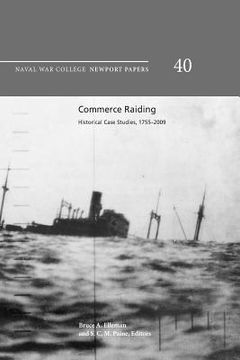Reseña del libro "Commerce raiding: historical case studies, 1755-2009 (en Inglés)"
For centuries, attacks on maritime commerce have been consistent features of war at sea. At the same time, a fundamental raison d'être of navies has been the protection of maritime trade against such attacks. From ancient times, piracy has been an issue at sea, and a long tradition of private men-of-war lasted into the mid-nineteenth century.After 1690, the French navy put into practice a concept of guerre de course as an alterna-tive to fleet battle, or guerre d'escadre, as a means of dealing with the superior power of Britain's Royal Navy. In the 1870s and 1880s a group of naval thinkers in France, labeled the Jeune École, promoted ideas of commerce raiding with high-speed torpedo boats. Other naval theorists-including Alfred Thayer Mahan in the United States, Sir Julian Corbett in Britain, and Raoul Castex in France-concluded from their analyses of his-tory that such commerce warfare was an indecisive method of waging war by relatively weak powers, an approach that was not as effective as one focusing primarily on the victory of one battle fleet over another. During the two world wars of the twentieth century submarine attacks on maritime trade were extremely effective, leading the great American naval thinker J. C. Wylie to define two different types of strategy: a sequential strategy that leads from one action to another, and a cumulative strategy, such as one involving attrition of merchant shipping in commerce warfare.Some commentators have argued that in the modern globalized economy, no state would find any advantage in attacking a global interconnected maritime trade that has benefit for all. Yet, as one prescient observer of this subject noted recently, "unlikely threats and outdated practices rear their ugly heads when the situation favors them" (Douglas C. Peifer, "Maritime Commerce Warfare: The Coercive Response of the Weak?," Naval War College Review 66, no. 2 [Spring 2013], pp. 83-109, quote at p. 84).A consideration of the range of historical case studies in this volume provides an opportunity to reflect on the ways in which old and long-forgotten problems might reemerge to challenge future naval planners and strategists

